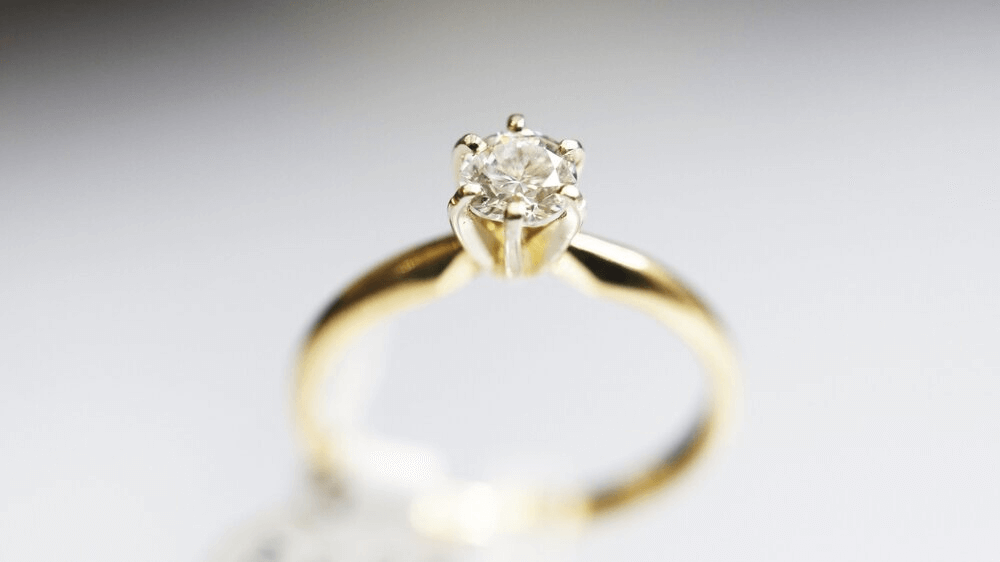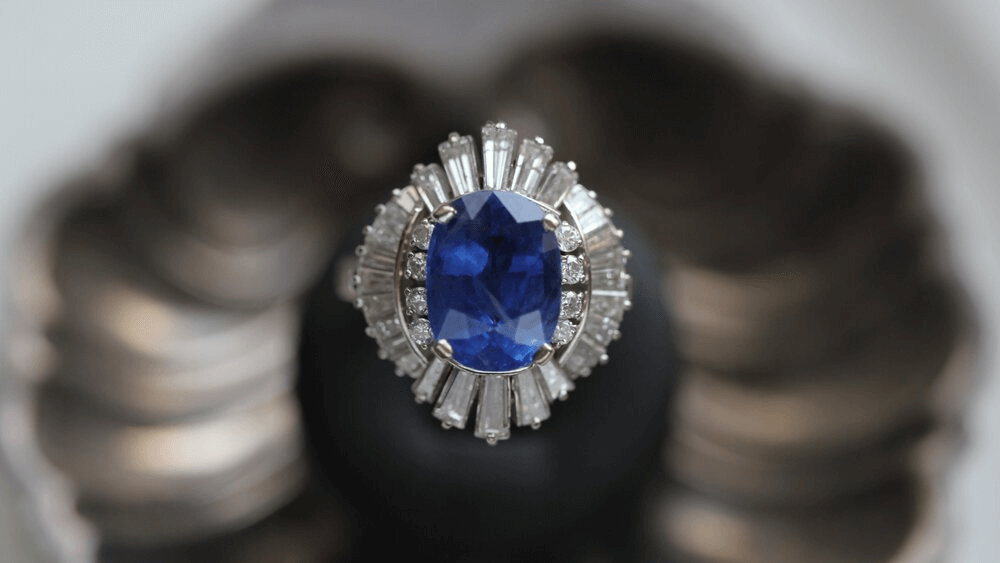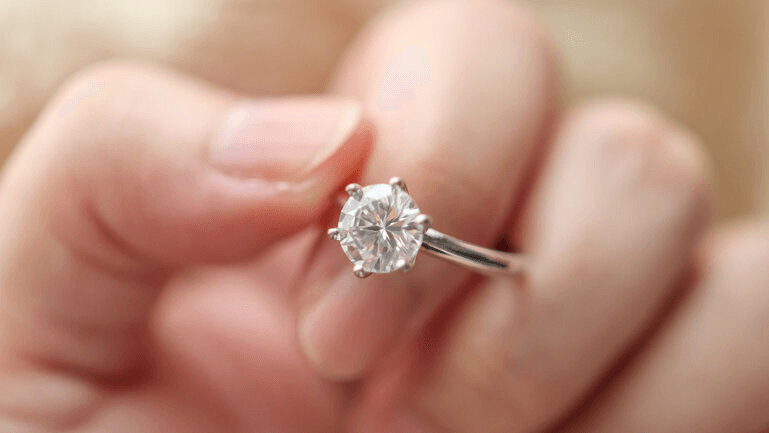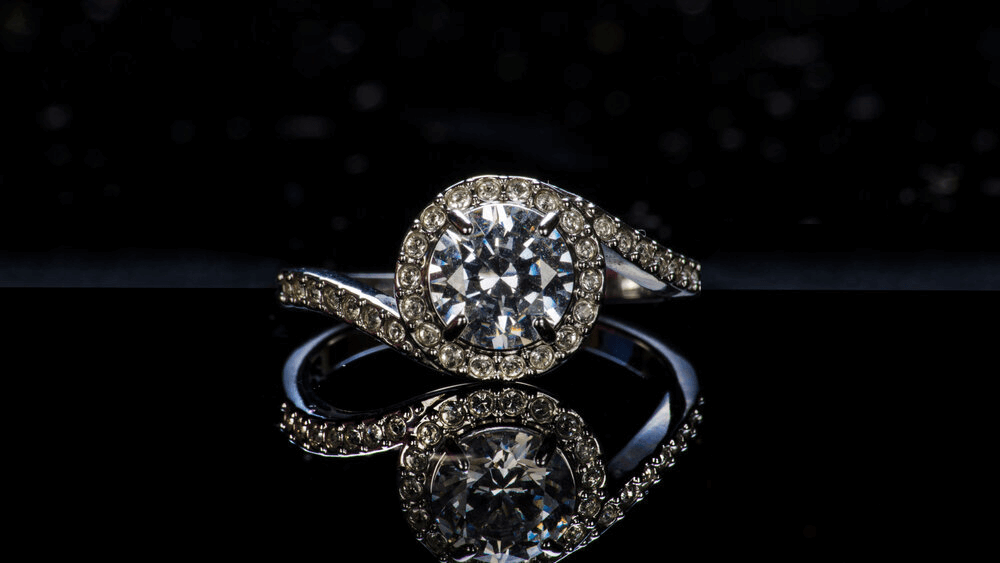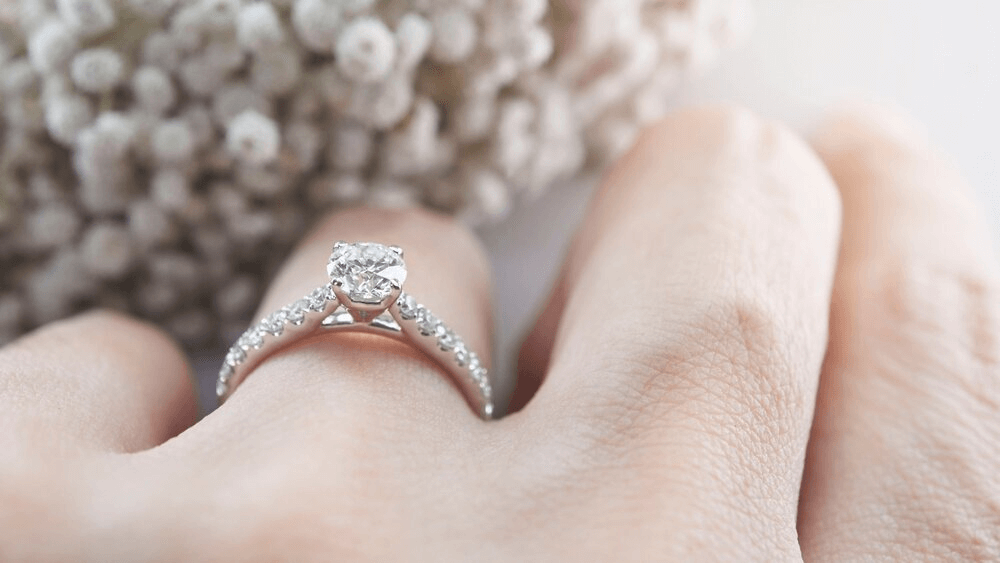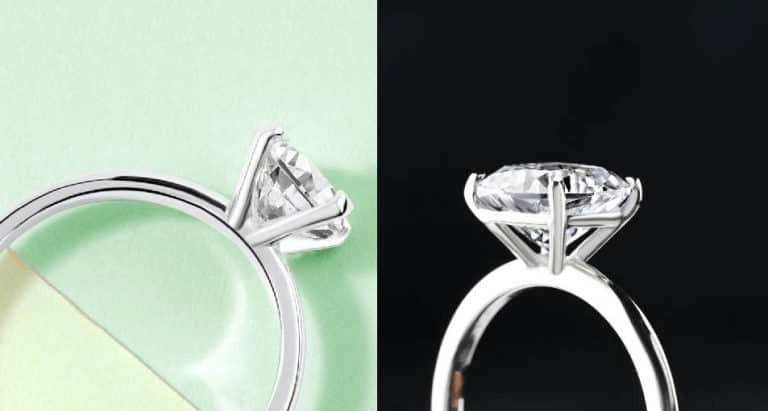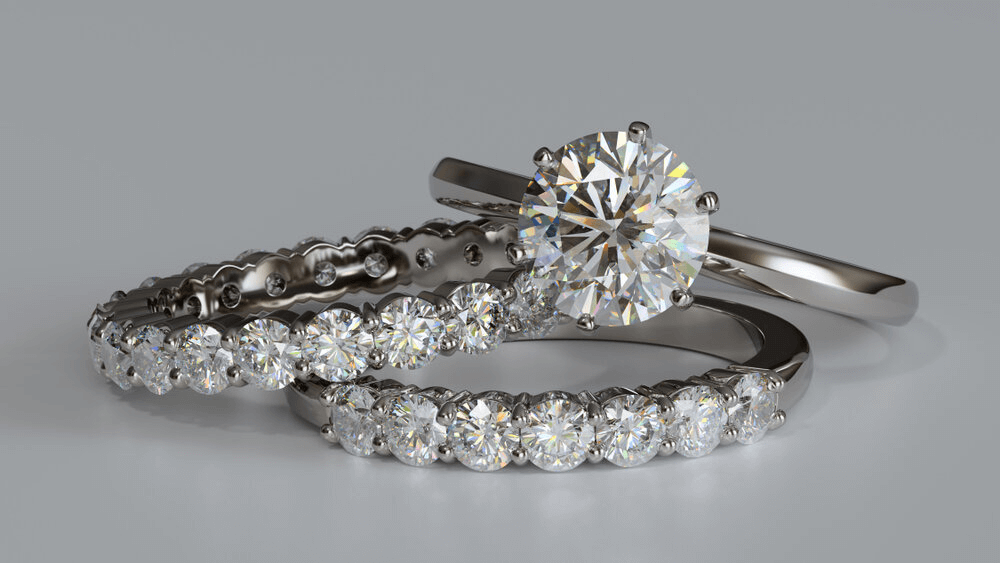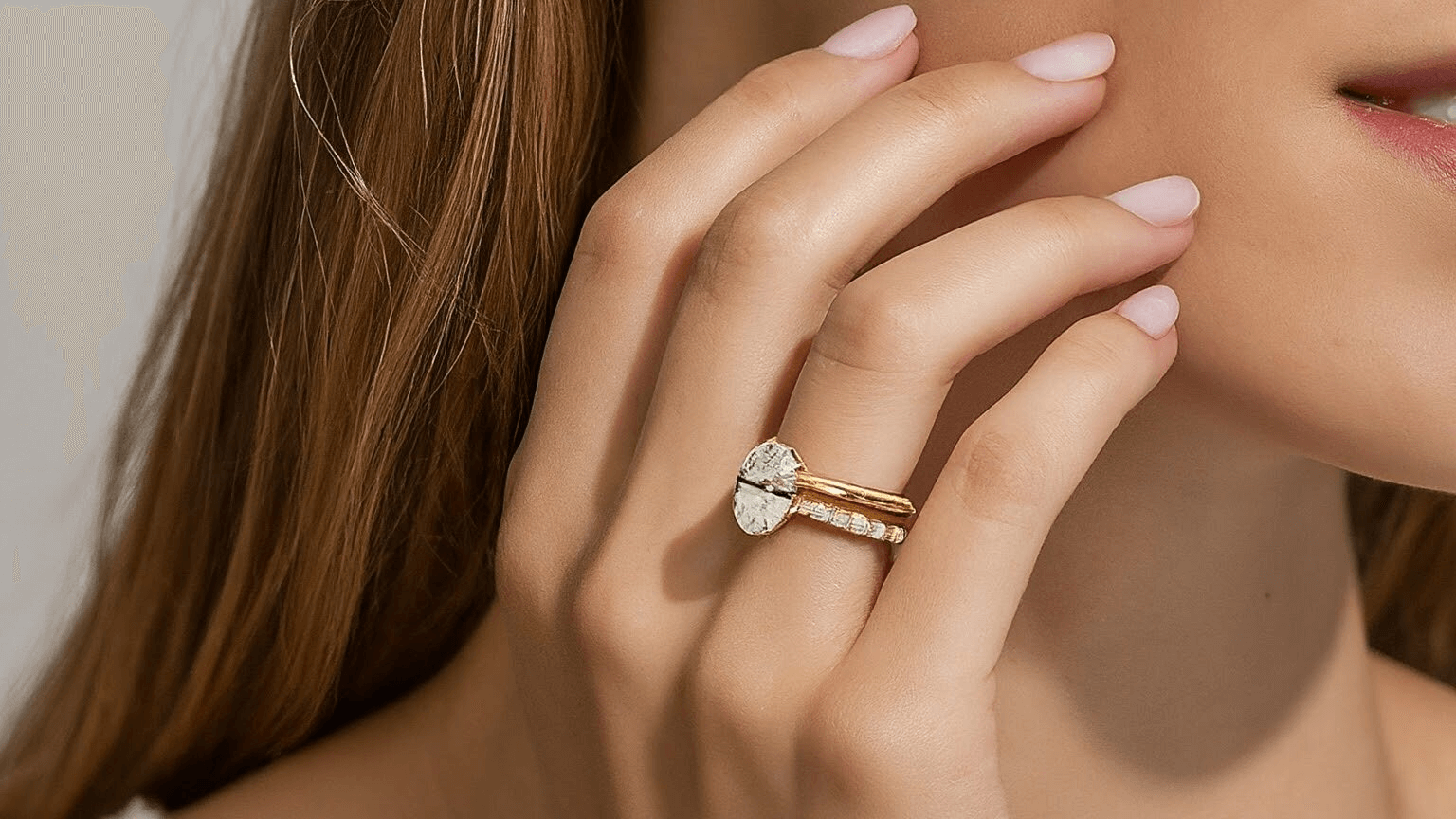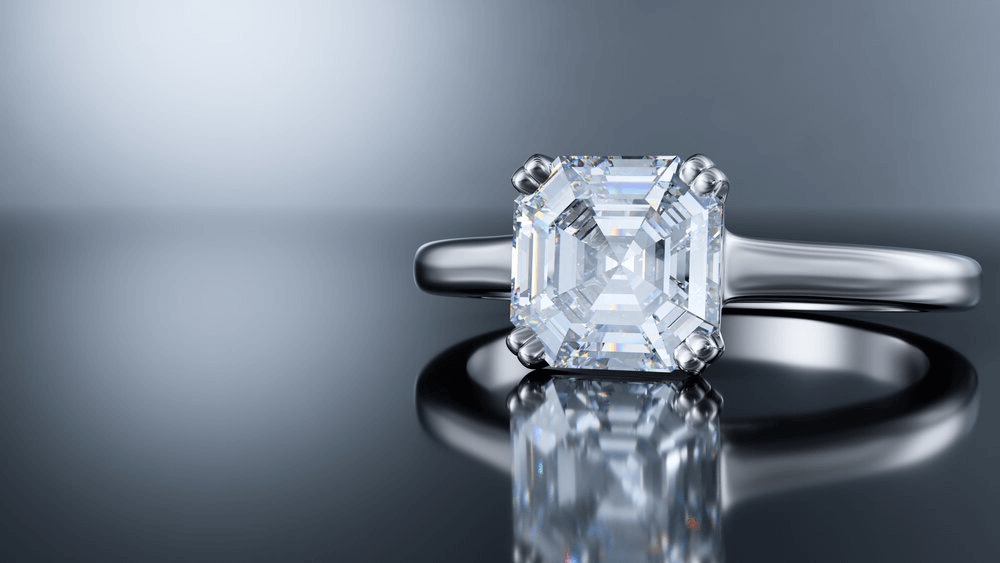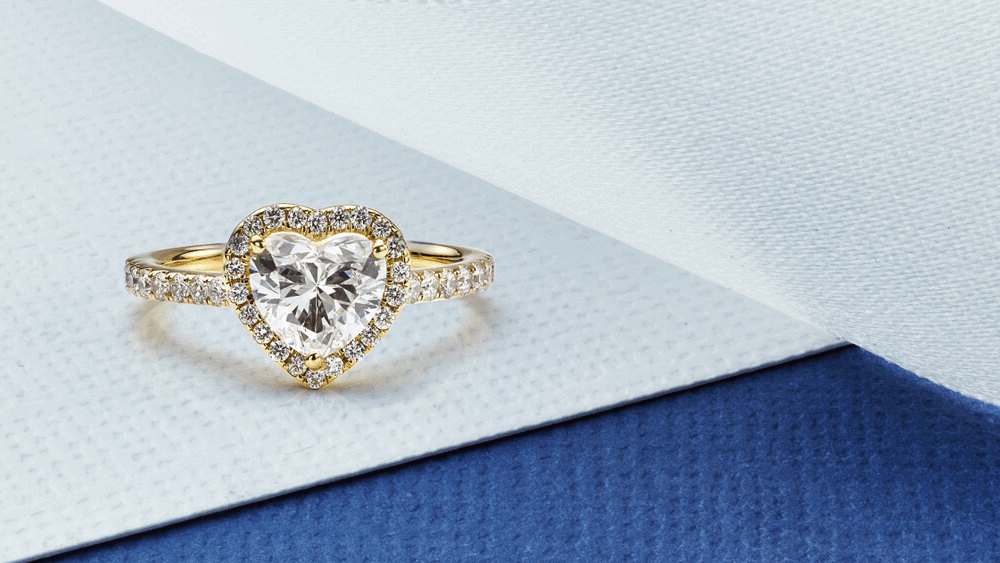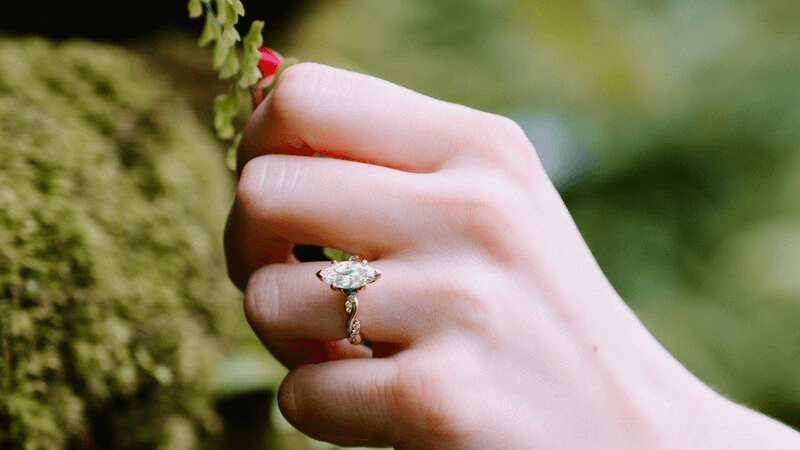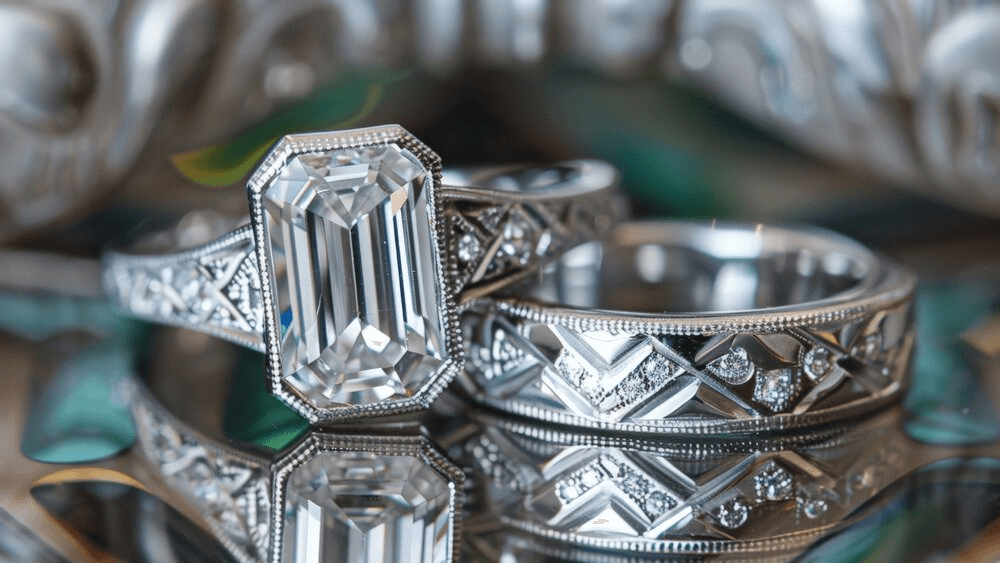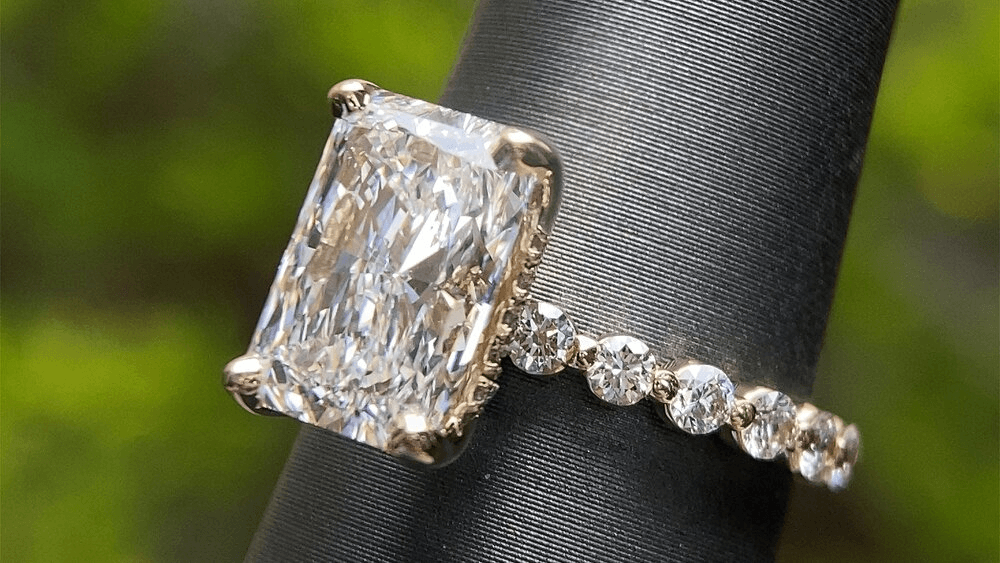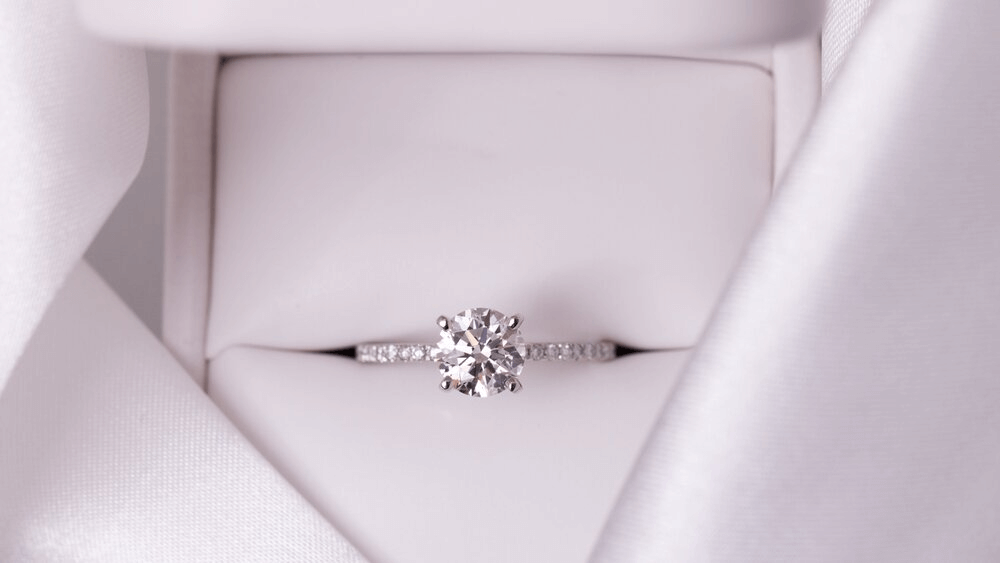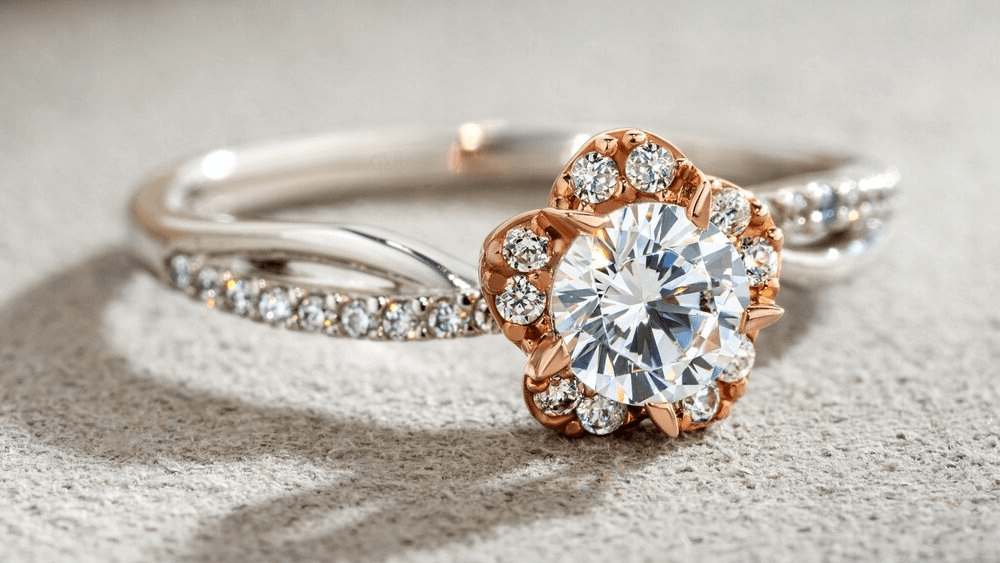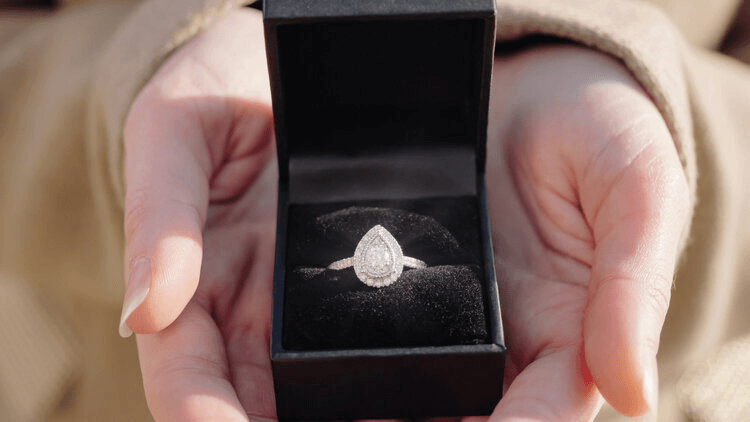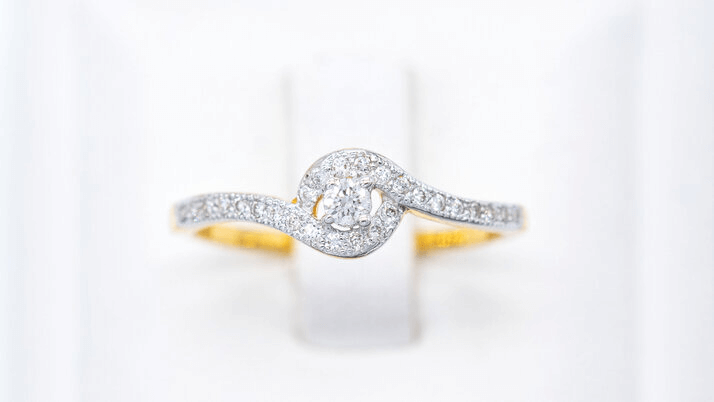Unlock Dazzling Bar Setting Engagement Rings

By Gary A.

Edited by Olivia H.
Published Aug 17, 2021
Edited on Mar 31, 2025
With its sleek design and the ability to maximize sparkle, a bar setting ring elegantly showcases diamonds while offering a unique, modern twist on traditional ring styles.

Navigate This Guide:
- 7 Quick Tips for Buying a Diamond Engagement Ring with a Bar Setting
- Introduction
- The Basics of Bar Setting Designs
- Bar Setting vs Other Ring Styles
- Our Expert Take
- 7 FAQs
Before we dive deeper into the specifics, here are some practical tips to help guide your decision-making process:
7 Quick Tips for Buying a Diamond Engagement Ring with a Bar Setting
When selecting a diamond engagement ring, especially with a bar setting, it’s crucial to consider specific factors to ensure you get the best value and design. Here are practical tips to guide your purchase:
- Tip 1: Understanding the Bar Setting Structure Examine the Bars’ Strength: Check the metal bars’ sturdiness in the setting. They should be robust and well-crafted to securely hold the diamonds.
- Tip 2: Visibility of Diamonds: Ensure the bars do not overshadow the brilliance of the diamonds. The bar setting’s advantage is to allow maximum light exposure, enhancing the stone’s sparkle.
- Tip 3: Look for Symmetry in Setting: Ensure the diamonds are evenly spaced and aligned. Uneven settings can affect the ring’s overall appearance and the diamonds’ security. Quality of Diamonds: Pay attention to the 4 Cs (Cut, Color, Clarity, and Carat). In a bar setting, the quality of side diamonds significantly contributes to the ring’s overall sparkle.
- Tip 4: Select the Right Metal: The choice of metal (gold, platinum, etc.) affects the ring’s look and durability. Consider lifestyle factors and personal preference for the best selection. Check for Metal Integrity: Inspect the ring’s band and setting for any signs of weakness or damage, which can impact the longevity and safety of the diamonds.
- Tip 5: Understand Resizing Limitations: Bar settings can be challenging to resize. Choose a ring size carefully or opt for a design that allows for easier adjustments.
- Tip 6: Maintenance and Care: Regular cleaning and check-ups are vital to maintain the ring’s beauty and ensure the security of the setting. Be gentle during cleaning to avoid dislodging the diamonds.
- Tip 7: Warranty and Return Policies: Ensure the jeweler offers a reasonable warranty and return policy. This protection is crucial for any potential issues with the setting or diamonds post-purchase.
Now that you’ve got these practical tips, use Jeweler AI below to find the perfect engagement ring that suits your style and budget:
Introduction
The key to any stunning diamond ring is sparkle – and that means that the key to any great setting is subtlety. Any of the most popular styles of ring settings must be able to balance the task of securing the diamonds within the metal band, with the task of optimizing the light performance of those diamonds.
In other words, a setting needs to take on two roles: it needs to be practical, and it needs to be beautiful without infringing on the diamonds’ own beauty.
Given the highly complex way light travels through diamonds, this is rarely easy, and experienced jewelers dedicate thousands of hours to figuring out the best way to display a diamond. However, the bar setting is one example of the jewelers’ success. Capable of securing many smaller diamonds alongside one another without limiting sparkle, this setting has represented a firm favorite among buyers for many years.
The Basics of Bar Setting Designs
A bar setting refers to a striking design that places just two parallel metal bars on either side of the diamond, in order to leave as much of the diamonds exposed to the light as possible.
A. Light Reflection and Diamond Enhancement
These bars run vertical – or, in other words, they follow the line of the finger when worn. This means that they leave the top and bottom of the band open, allowing light to enter the diamond from many different angles at once.
What does this mean? It means more opportunities for the light to enter and exit the diamonds, which means that each one will sparkle and flash in a different way as the wearer’s hand moves through the light.
B. Design Features
In a bar setting, the diamonds may be placed directly alongside one another, similar to how they are arranged in a pavé setting, or they may be spaced further apart, depending on your preference.
The bar setting is a popular, unique, and elegant design for wedding bands and eternity rings, but has also proven popular in engagement rings. The many smaller stones create a beautiful compliment to a large, center diamond.
Understanding the Construction of Bar Setting Engagement Rings
An expertly crafted bar setting is secure enough to hold your diamonds firmly in place. They shouldn’t wobble or fall out, provided they are properly crafted and cared for.
This is where the jeweler’s skills are really put to the test. It takes an expert eye to figure out how to make those diamonds look as though they’re floating on the wearer’s finger, rather than tightly secured within the metal.
In the absence of a prong or bezel setting, invisible grooves within the bars prevent the diamond from moving or working itself loose. The effect is as stunning as it is secure – as though these small gemstones are capable of defying gravity.
Bar Setting vs Other Ring Styles
The bar setting is often compared to the channel setting, but there are distinct differences. The bar setting features two bars, while a channel secures the diamond and creates a box around each diamond, effectively enclosing those gemstones from all angles.
In both designs, the diamonds sit flush with the setting. While they may sound similar at first, these two settings create pretty different effects in terms of sparkle, though both offer their own beauty.
A channel setting does offer a little more security to the diamonds since it offers that additional layer of protection against knocks and scrapes. For this reason, you might want to make regular trips to a jeweler to ensure every diamond is as secure as possible, and that none of them needs replacing.
So, if you’re looking to choose a ring that offers the most security possible, a channel setting could turn out to be your preferred choice. Don’t rule out the elegance of the bar setting, though – it’s more than worth it when those diamonds appear to float around the finger with the least interference from the band.

Customisation Options for Bar Set Rings
You can customise or resize your bar setting, but it may be difficult and expensive – particularly if the diamonds cover the full circumference of the band. Ring sizing tends to rely on there being a section of plain metal, which may be stretched or narrowed depending on the wearer’s size.
In some designs, the diamonds will be used to accent the shoulders of the ring. If this is the case, then reducing or stretching the ring will be a relatively simple process.
If, however, the band setting features all the way around the ring, then it can be incredibly difficult for a jeweler to change the ring. It may take a long time, and a large investment on your part, as a jeweler will have to work to alter the ring’s circumference without interrupting the ring’s already precise design.
If you have opted for a band setting, then you should make doubly sure that you’ve got the right ring for its intended wearer in order to avoid the additional cost of getting it resized. If the band setting is intended for an engagement ring, and you’re finding it hard to get a definitive ring size, then we recommend that your band setting does not cover the full circumference of the ring, so that there is still room for sizing down or up.
Metal and Diamond Considerations
While round cut diamonds are the traditional diamond choice, bar settings can be used to hold many different shapes in place for a unique design.
Whether we are investing in a large, center diamond for an engagement ring, or the smaller gemstones to be used within the bar setting, the first question on anyone’s mind is likely to be which diamond cut sparkles the most.
This is why you will see plenty of examples of band settings featuring round or oval cut diamonds – the buyer will get the most sparkle for their money.
Still, it’s not all about sparkle. A more unique cut has the power to transform this setting into something truly exceptional.
A band setting featuring emerald cut diamonds, for instance, creates the stunning, geometric lines of the Art Deco era of Gatsby and classic Chanel. While it won’t sparkle from infinite angles like the round cut, the light will glide and flash across this setting in a truly unique way.
The bar setting can be used for almost any diamond shape, although some are undoubtedly harder than others. Head to our online store to get a visual idea of a bar setting and how it is designed.
When it comes to metal, any precious metal will offer the perfect combination of strength and beauty. The metal you choose should be dictated by your preference for color, and how that color interacts with the diamonds themselves.
While the point of the bar setting is to let the diamonds speak for themselves and to ensure that the setting does not intrude on their ability to sparkle, your choice of metal will still play a key role in altering the appearance of the ring.
Consider the fact that diamonds set in metals featuring ‘warmer’ hues, such as yellow or rose gold, will feature a slight tint. This can look very striking but is not for everyone. Some people prefer the sleek, bright look of a clear diamond set against white gold or platinum.
Look through our online store to get an idea of the different ways certain metals ‘react with’ the diamond. When it comes to metals, photographs and videos can give you an immediate indication of whether they are right for you or right for the diamond you are hoping for.
Our Expert Take
The bar setting is a beautiful, classic, and unobtrusive setting for your diamonds. While subtle, your chosen precious metal will still shine through in its own way, without infringing on the diamonds’ sparkle.
Not only are the results truly something to behold, but the bar setting is one of those designs which truly draws upon the expertise and dexterity of the jeweler who created it. Like many things, its simplicity is only achievable with talent, and many years’ worth of practice.
Furthermore, it’s ideal for anyone looking to find a bridal set. The bar setting can be echoed across the shoulders of her engagement ring, and the band of her wedding ring, too, in order to create the ideal set.
Just remember that resizing is not as simple as it is with other rings and that the bar setting’s less obtrusive design can mean that those little diamonds are more vulnerable to getting chipped or scratched over years of wear.
Don’t let this be a dealbreaker, however. If you have no question about the wearer’s ring size – the bar setting stands out as one of the jewelry world’s most striking and complex designs, and will certainly live up to the hype when it is finally placed on the wearer’s finger.
7 FAQs
- Q: What is a Bar Setting in a Ring?
- A: A bar setting in a ring refers to a style where diamonds or gemstones are held in place by vertical bars of metal on either side. This setting allows for more light exposure to the stones, enhancing their brilliance.
- Q: How Secure is a Bar Setting for Diamonds?
- A: Bar settings are generally secure for diamonds, as they use metal bars to firmly hold the stones in place. However, regular maintenance is recommended to ensure the bars and stones remain intact.
- Q: Can Bar Set Rings be Resized?
- A: Yes, bar set rings can be resized, but it may be more challenging than resizing other styles. The presence of diamonds along the band can limit the extent to which a ring can be adjusted.
- Q: Are Bar Set Rings Suitable for Daily Wear?
- A: Bar set rings are suitable for daily wear, but they require careful handling. Due to their exposed setting, the diamonds can be more prone to knocks and scratches.
- Q: How Do I Clean My Bar Set Ring?
- A: Clean your bar set ring using mild soap and warm water with a soft brush. Avoid harsh chemicals and rough handling, especially around the bar set diamonds.
- Q: Is a Bar Setting More Expensive Than Other Settings?
- A: The cost of a bar setting can vary, but it is generally in line with other diamond settings. The total cost depends on the metal used, the quality and size of the diamonds, and the craftsmanship involved.
- Q: Can Any Diamond Shape be Used in a Bar Setting?
- A: Most diamond shapes can be set in a bar setting, although round and baguette cuts are commonly used due to their ability to fit well within the vertical bars.
Summarizing the allure of bar setting rings and inviting readers to explore more with Jeweler AI.
FOLLOW-UP GUIDE SERIES





